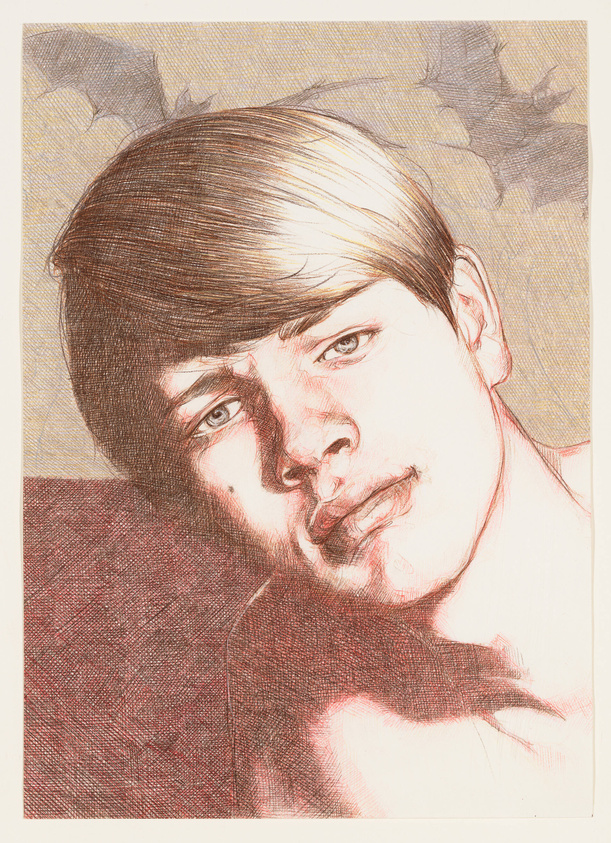Paul P.
Mar 6, 2014
0:00
Paul P.
0:00
Paul P.: Hi, my name is Paul P.
There are two material parts in the exhibition. The first is a sculpture in the form of a desk and a stool made out of mahogany, and the other are a series of ink drawings. Both of those things have their initial―at least superficial―motivation in a connection to the writer Nancy Mitford. The British writer who was born in 1904 and died in 1973 and my fascination with her.
Narrator: Paul P. has used these works to connect what he thinks of as a series of aesthetic high points throughout history. He is deeply interested in Nancy Mitford’s historical milieu—a group of young, brilliant thinkers who shook off the proprieties of their aristocratic backgrounds in the years following the First World War. The artist finds this period especially moving because the aesthetic and personal experiments of these so-called “Bright Young Things” were curtailed by the Second World War, which destroyed the lives of many of Mitford’s peers. For Paul P, Mitford’s generation resonates with that of gay men after Stonewall, who came out into the open and began exploring new freedoms only to run headlong into the AIDS crisis. This analogy makes Mitford’s status as a survivor of her circumstances all the more powerful.
Paul P.: The desk is, in my imagination, a desk perhaps for her or perhaps her successor, even perhaps her ghost.
I've also thought about Nancy Mitford's experience during the war, particularly being in London during the blitz and surviving the bombing of the city. I've studied a lot of pictures of London at that time. The way in which buildings have been ripped apart and their armatures, their twisted armatures have given me a little bit of further inspiration in terms of the lines of the desk.


